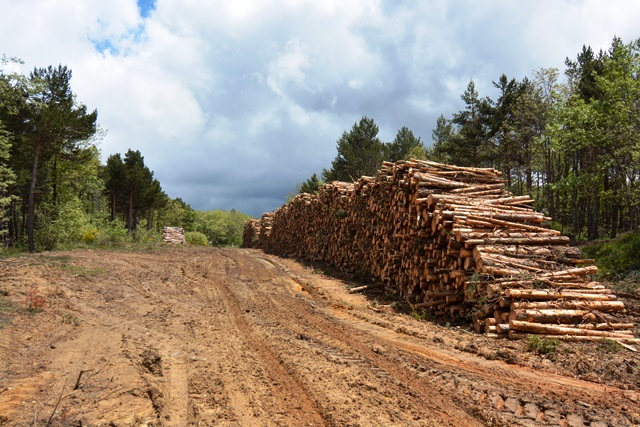
The North American forest sector experienced a steep decline in the wake of the 2008 global economic crisis, due to the associated downturn in the housing market. Most single-family homes in North America are built with wood, and this downturn had devastating effects on the domestic forest-based industries.
Soon after, from about 2010 on, Chinese demand for logs and sawn timber from western North America expanded dramatically, driven by policy incentives and relatively low product prices. This demand pattern is expected to change as the North American housing markets pick up. Russia then will be very well positioned to supply China’s ever increasing need for wood. “It is only a matter of time” said Bruce Glass, Senior Forest Economist with Campbell Global, with regard to an upturn in US markets during the Market Discussion of the UNECE Committee on Forests and the Forest Industry in Kazan, Russian Federation on 18 December 2014. At this meeting, more than a 150 participants from 32 countries met to discuss the latest developments, and projected developments for 2015 in the forest sector and related markets.
Among the topics discussed, was the market vulnerability of wood-based energy in North America as a result of its dependence on subsidies and the currently low prices of other energy sources, especially natural gas. At the current time, pellet manufacturing is the most positive market segment for wood energy, but it is almost entirely dependent on exports to the EU; and there are questions as to whether the citizens of the EU will continue to absorb the high energy costs that result from subsidizing wood energy. “Biofuels are not currently economically viable without subsidies, given current energy costs," said Richard Vlosky, Director of the Louisiana Forest Products Development Center, Louisiana State University Agricultural Center.
Participants also mentioned that, across regions, dropping fossil fuel prices were having both positive and negative impacts on forest products markets and, in particular, on wood energy products. The competitiveness of wood energy was being undermined by less expensive natural gas and oil, however, consumers in many areas should have more disposable income for purchasing items made of wood, such as housing and furniture and operating costs for some parts of the forest industry should also be lower.
Current developments in the wood-based fabric industry were also discussed. Because there are land and water restrictions on the continued expansion of cotton plantations, it is expected that the production of wood-based fibres will increase over the next few years. “Many countries in the UNECE region are well-placed to take advantage of this potential,” said Johannes Hangler, Deputy Director, Federal Ministry of Agriculture, Forestry, Environment and Water Management, Austria.
New-generation, wood-based fiber products use a “closed loop” system, which ensures clean water, air and irritation-free fabric. “This is the greenest, more environmentally friendly textile produced worldwide at the moment,” said Lorenz Wied, Head of Strategic Projects at Lenzing AG. “It’s the future of textiles and the base for sustainability in fashion,” he concluded.
For further information on Market Statements, please follow: http://www.unece.org/forests/market-statements-2014.html and www.unece.org/forests/fpm/timbercommittee.html
Otherwise contact: Mr Florian Steierer at [email protected]